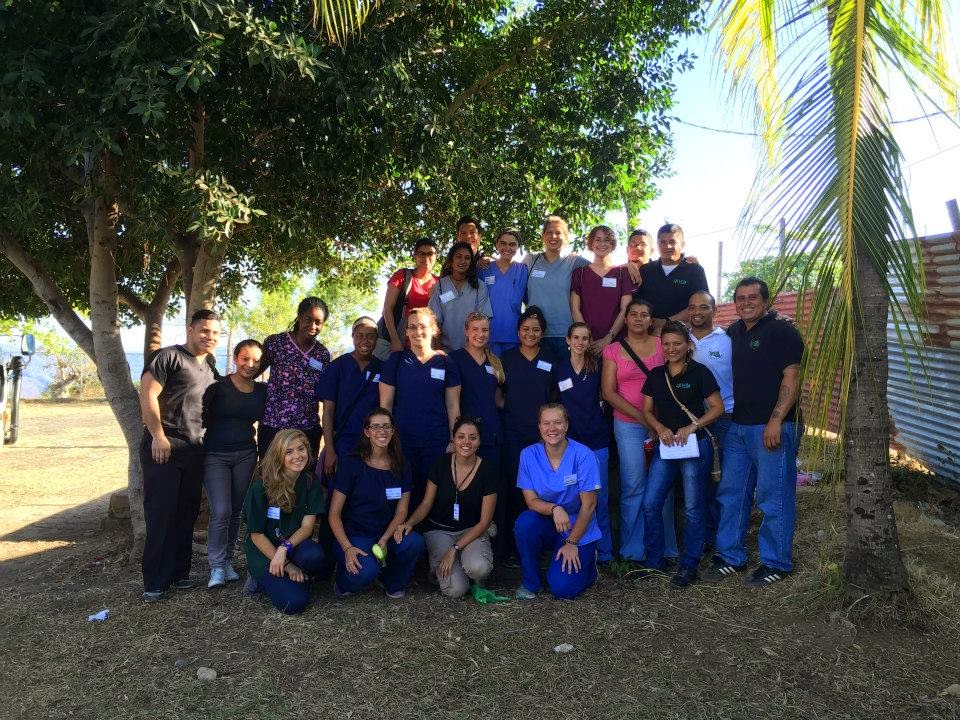What is it like to start work at 5a.m., to endure the heat of the tropical sun, to rest and drink water only at midday, and to end each day having earned only about eight dollars? Most of us will never know, but for sugarcane workers this experience is all too familiar. When our group went to visit a sugarcane field near Palo Verde Biological Station we saw these men, steadily swinging machetes, their arms covered in the black soot left by the burning of the last crop’s residue. As I watched them work I thought of what we had learned about Mesoamerican Nephropathy, an epidemic of cases of chronic kidney disease (CKD) occurring in the Mesoamerican region. This CKDu (the “u” denoting the unknown cause of the disease) has a high mortality rate and mostly affects male manual workers, especially those that work in sugarcane fields (Torres et al. 2010, Peraza et al. 2012).
Our guide, a man who had once worked in sugarcane fields, told us these men avoided resting and drinking to appear more manly and that they did this taxing physical labor every single day from December to April. Rather than being paid by the hour, as is the case for other sugarcane workers, the workers in this field were paid by the amount of cane they could cut. This, along with the previously mentioned attitudes toward resting, deters workers from giving their bodies the breaks they need to remain healthy. We had learned this two days before in class where our professor had said that the US Occupational Safety and Health Administration recommends 45 minutes of rest for every 15 minutes of labor in these conditions. It was clear that these men did not and could not afford to follow these recommendations. They mainly come from other provinces and Nicaragua because they need the work in order to support their families. Yet, for the little they earn there is a great cost to their health.
While standing in the oppressive heat for only about thirty minutes I wondered how these men went through this physical strain every day. I thought of their risk of Mesoamerican Nephropathy and for the briefest of moments I wished machines could take over their hard labor. I shook off the idea, knowing that putting these people out of the only work they could find was no solution at all. I thought about how their situation needs the service of local public health organizations, worker rights organizations and researchers. Local public health organizations could campaign to help with the stigmas around rest and re-hydration. Workers rights organizations could work to demand fair hourly pay so that breaks are not taken at the expense of wages. Researchers may further investigate hypotheses regarding the cause of the disease, including possible factors such as pesticide usage, heat stress and chronic dehydration, the use of non-steroidal anti-inflammatory drugs and arsenic (Landau 2014).
I realized I find this research inspiring and that I may like to work with agricultural workers in the future, either in public health or public health research. Before this experience I found it difficult to imagine working conditions such as this or a mysterious illness so specific to certain populations. Now, I find myself imagining the ways we might begin to help.
Literature Cited
Landau, E. 2014. Mysterious kidney disease plagues Central America. CNN.
http://edition.cnn.com/2014/06/11/health/kidney-disease-ckdu/
Peraza, S., Wesseling, C., Aragón, A., Leiva, R., García-Trabanino, R.A., Torres, C., Jakobsson, K., Elinder, C.G., Hogstedt, C. 2012. Decreased kidney function among agricultural workers in El Salvador. American Journal of Kidney Diseases 59(4): 531-540
Torres, C., Aragón, A., González, M., López, I., Jakobsson, K., Elinder, C.G., Lundberg, I., Wesseling, C. 2010. Decreased kidney function of unknown cause in Nicaragua: a community based survey. American Journal of Kidney Diseases 55(3): 485-496
Erica Rayack














.jpeg)
.jpeg)


.jpg)

.JPG)





